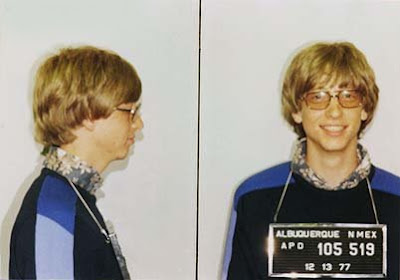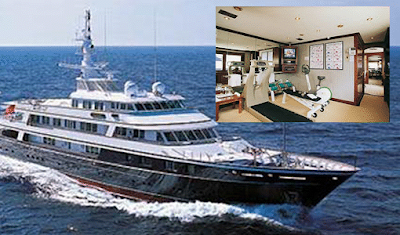Wednesday, February 3, 2010
Brokers
In the Over-the-Counter Market
The role of a broker in the OTC market is to bring together a buyer and a seller in return for a fee or commission.Whereas a “dealer” acts as principal in a transaction and may take one side of a trade for his firm’s account, thus committing the firm’s capital, a “broker” is an intermediary who acts as agent for one or both parties in the transaction and, in principle, does not commit capital.
The dealer hopes to find the other side to the transaction and earn a spread by closing out the position in a subsequent trade with another party, while the broker relies on the commission received for the service provided (i.e.,bringing the buyer and seller together). Brokers do not take positions or face the risk of holding an inventory of currency balances subject to exchange rate fluctuations.
In over-the-counter trading, the activity of brokers is confined to the dealers market. Brokers, including “voice”brokers located in the United States and abroad, as well as electronic brokerage systems, handle about onequarter of all U.S.foreign exchange transactions in the OTC market. The remaining three-quarters takes the form of “direct dealing”between dealers and other institutions in the market.
The present 24 percent share of brokers is down from about 50 percent in 1980The number of foreignexchange brokers in the United States was 9 in 1998, including voice brokers and the two major automated order-matching, or electronic brokerage systems. The number of brokerssurveyed is down from 17 in 1995. The share of business going through brokers varies in different national markets, because of differences in market structure and tradition.
Earlier surveys showed brokers’ share averages as low as 10-15 percent in some markets (Switzerland and South Africa) and as high as 45-50 percent in others (France, Netherlands, and Ireland).Many U.S. voice broker firms have branches or affiliations with brokers in othercountries.
It is common for a deal to be brokered between a bank in the United States and one in London or elsewhere during the period of the day when both markets are active. In the OTC market, the extent to which brokering, rather than direct dealing, is used varies, depending on market conditions, the currency and type of transaction being undertaken, and a host of other factors. Size is one factor—the average transaction is larger in the voice brokers market than in the market as a whole.
Using a broker can save time and effort, providing quick access to information and a large number of institutions’ quotes, though at the cost of a fee. Operating through a broker can provide at least a degree of confidentiality,when a trader wants to pursue a particular strategy without his name being seen very widely around the market in general (counterparties to each transaction arranged by a broker will, of course, be informed, but after the fact).
The brokers market provides access to a wide selection of banks, which means greater liquidity. In addition, a market maker may wish to show only one side of the price—that is, indicate a price at which the market maker is willing to buy, or a price at which the market maker is willing to sell, but not both—which can be done in the brokers market, but generally not in direct dealing. Of course, a trader will prefer to avoid paying a broker’s fee if possible,but doesn’t want to miss a deal just to avoid a fee. Foreign exchange brokerage is a highly competitive field and the brokers must provide service of high quality in order to make a profit.
Although some tend to specialize in particular currencies, they are all rivals for the samebusiness in the inter-dealer market.Not only do brokers compete among themselves for brokerbusiness—voice brokers against each other, against voice brokers located abroad, and against electronic broking systems—but the broker community as a whole competes against banks and other dealer institutions that have the option of dealing directly with each other, both in their local markets and abroad, and avoiding the brokers and the brokers’ fees.
Voice Brokers
Skill in carrying out operations for customers and the degree of customers’ confidence determine a voice broker’s success. To perform their function, brokers must stay in close touch with a large number of dealers and know the rates at which market participants are prepared to buy and sell. With 93 active dealers in New York and a much larger number in London, that can be a formidable task, particularly at times of intense activity and volatile rate movements.
Information is the essential ingredient of the foreign exchange market and the player with the
latest, most complete, and most reliable information holds the best cards. As one channel, many voice brokers have open telephone lines to many trading desks, so that a bank trader dealing in, say, sterling, can hear over squawk boxes continuous oral reports of the activity of brokers in that currency, the condition of the market, the number of transactions occurring, and the rates at which trading is taking place, though traders do not hear the names of the two banks in the transaction or the specific amounts of the trade.
Automated Order-Matching, or Electronic Broking Systems
Until 1992, all brokered business in the U.S. OTC market was handled by voice brokers. But during the past few years, electronic broker systems (or automated ordermatching systems) have gained a significant share of the market for spot transactions.
The two electronic broking systems currently operating in the United States are Electronic Brokerage Systems, or EBS, and Reuters 2000-2. In the 1998 survey, electronic broking accounted for 13 percent of total market volume in the United States,more than double its market share three years earlier. In the brokers market, 57 percent of turnover is now conducted through order-matching systems, compared with 18 percent in 1995.
With these electronic systems, traders can see on their screens the bid and offer rates that are being quoted by potential counterparties acceptable to that trader’s institution (as well as quotes available in the market more broadly), match an order, and make the deal electronically,with back offices receiving proper notification. The electronic broking systems are regarded as fast and reliable. Like a voice broker, they offer a degree of anonymity. The counterparty is not known until the deal is struck, and then only to the other counterparty. Also, the systems can automatically manage credit lines.
A trader puts in a credit limit for each counterparty that he is willing to deal with, and when the limit is reached, the system automatically disallows further trades. The fees charged for this computerized service are regarded as competitive. The automated systems are already widely used for certain standardized operations in the spot market, particularly for smaller-sized transactions in the most widely traded currency pairs.
Many market observers expect these electronic broking or ordermatching systems to expand their activities much further and to develop systems to cover additional products, to the competitive disadvantage, in particular, of the voice brokers. Some observers believe that automated systems and other technological advances have substantially slowed the growth in market turnover by reducing “daisy chaining” and the “recycling” of transactions through the markets, as well as by other means.
In the Exchange-Traded Market
In the exchange-traded segment of the market, which covers currency futures and exchangetraded currency options, the institutional structure and the role of brokers are different from those in the OTC market. In the exchanges, orders from customers are transmitted to a floor broker.The floor broker then tries to execute the order on the floor of the exchange (by open outcry), either with another floor broker or with one of the floor traders, also called “locals,” who are members of the exchange on the trading floor, executing trades for themselves.
Each completed deal is channeled through the clearinghouse of that particular exchange by a clearing member firm. A participant that is not a clearing member firm must have its trades cleared by a clearing member. The clearinghouse guarantees the performance of both parties, assuring that the long side of every short position will be met, and that the short side of every long position will be met.
This requires (unlike in the OTC market) payment of initial and maintenance margins to the clearinghouse (by buyers and sellers of futures and by writers, but not holders, of options). In addition, there is daily marking to market and settlement. Thus, frequent payments to (and receipts from) brokers and clearing members may be called for by customers to meet these daily settlements.
Philippines Light Rail Transit Public Transportation
The Manila Light Rail Transit System (Filipino: Sistema ng Magaan na Riles Panlulan ng Maynila),[citation needed] popularly known as the LRT, is a metropolitan rail system serving the Metro Manila area in the Philippines. Its twenty-nine stations over 28.8 kilometers (17.9 mi) of mostly elevated track form two lines. LRT Line 1, also called the Yellow Line, opened in 1984 and travels a north–south route. LRT Line 2, the Purple Line, was completed in 2004 and runs east–west.
The LRT is operated by the Light Rail Transit Authority (LRTA), a government-owned and controlled corporation under the authority of the Department of Transportation and Communications (DOTC). Along with the Manila Metro Rail Transit System (MRT, also called the Blue Line), and the Philippine National Railways (PNR), the LRT is part of Metro Manila's rail transportation infrastructure known as the Strong Republic Transit System (SRTS)
Stations
 The People Power Revolution was a series of nonviolent and prayerful mass street demonstrations in the Philippines that occurred in 1986. It was the inspiration for subsequent non-violent demonstrations around the world including those that ended the communist dictatorships of Eastern Europe.
The People Power Revolution was a series of nonviolent and prayerful mass street demonstrations in the Philippines that occurred in 1986. It was the inspiration for subsequent non-violent demonstrations around the world including those that ended the communist dictatorships of Eastern Europe.

 In 1990, it was voted by the BMW Tropical Beach Handbook as one of the best beaches in the world
In 1990, it was voted by the BMW Tropical Beach Handbook as one of the best beaches in the world
 Barasoain Church (also known as Our Lady of Mt. Carmel Parish) is a Roman Catholic church built in 1630 in Malolos City, Bulacan.
Barasoain Church (also known as Our Lady of Mt. Carmel Parish) is a Roman Catholic church built in 1630 in Malolos City, Bulacan.
 Laguna de Bay (Filipino: Lawa ng Bay; English: Laguna de Bay is the largest lake in the Philippines and the third largest freshwater lake in Southeast Asia
Laguna de Bay (Filipino: Lawa ng Bay; English: Laguna de Bay is the largest lake in the Philippines and the third largest freshwater lake in Southeast Asia
 Malacañan Palace, is the official residence of the President of the Philippines.
Malacañan Palace, is the official residence of the President of the Philippines.






















 >
>




















































No comments:
Post a Comment